After EPA handed over mine cleanup to the state, Nevada regulators approved 'significant revisions' that cut company's responsibility
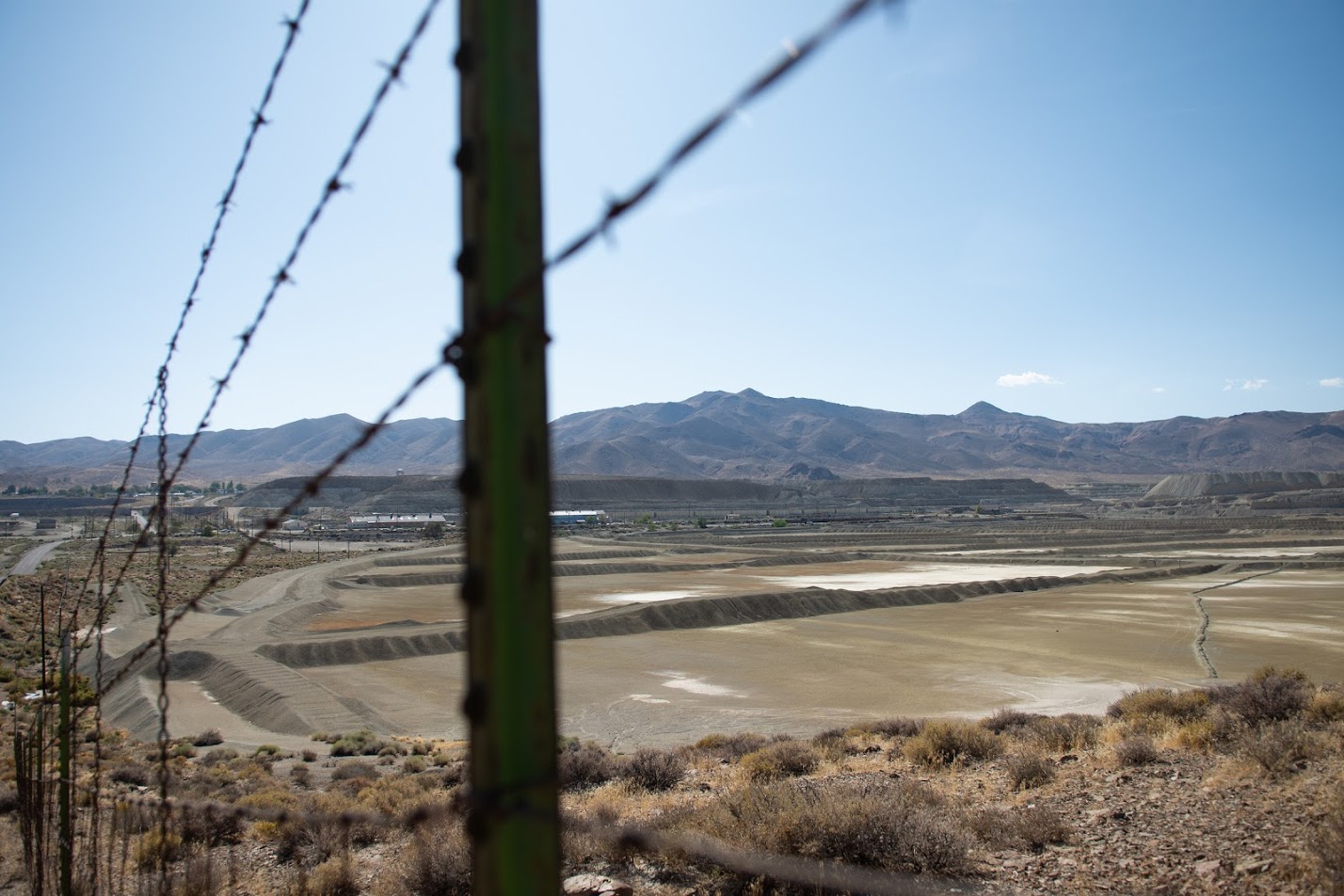
Don Hunter is worried about the uranium in his water.
For years, the oil company Atlantic Richfield, responsible for cleaning pollution at the nearby Anaconda Copper Mine, has paid to deliver bottled water to Hunter’s Yerington home. His well water registers about twice as much uranium as federal regulators consider safe for drinking.
“They probably should have taken care of this a long time ago,” he says.
Hunter lives about six miles away from the Anaconda Copper Mine, where mining practices through the 1960s created a contamination pathway to the local aquifer and tainted water with uranium. The same aquifer is shared by agriculture, homes and the Yerington Paiute Tribe.
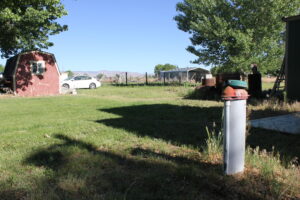
On a warm June morning, Hunter can see the former mine from the yard he irrigates with his well. It’s hard for Hunter to believe the high uranium reading isn’t at all mine-related, as state officials and the company argue in modeling. He can see the mine. He drinks bottled water.
“I just know they need to do something about the water,” Hunter says.
For more than a decade, the amount of contamination thought to be associated with the mine has shrunk in the favor of Atlantic Richfield, known as ARCO, based on data from a network of over 300 monitoring wells. In 2017, the EPA accepted ARCO’s report of the mine-related pollution, showing it stopped short more than a mile from Hunter’s home, which is near the Yerington Paiute Tribe’s reservation. Still, the model found extensive contamination in the area.
The mine-related groundwater plume, it said, contained 98.8 tons of uranium and more water than Las Vegas, a city of 2.2 million, uses every year. It could take 285 years to remove the quantity of water necessary to clean up the aquifer, even if 2,500 gallons were pumped each minute, according to a rough analysis the company included in its draft report on groundwater.
Then, the model was altered.
In 2018, ARCO got a new regulator: The Nevada Division of Environmental Protection.
The EPA deferred its oversight responsibilities to the state as part of a deal to remove the site from the Superfund list, which enables hazardous sites to get federal funding but has a long backlog. ARCO negotiated the deal with state regulators, who presented it to the EPA.
In May, state regulators approved a revised report holding the mine responsible for less than half of the potential contamination previously modeled, a conclusion far more favorable for ARCO. In the long term, it could mean a less extensive and less expensive aquifer cleanup.
Soon after the state division took over, ARCO started presenting new science. ARCO began mounting a case, based in part on a new analysis the company conducted, that significantly reduced the pollution zone that had been vetted by EPA’s technical experts and had undergone three revisions, according to public documents reviewed by The Nevada Independent.
By 2019, the company submitted a new model and new report. State regulators bought in.
The Yerington Paiute Tribe, in written comments on the documents, called the revisions in the new model a “dramatic change.” The tribe, a sovereign nation, said that the state regulatory agency, known as NDEP, “failed to notify” tribal officials that it had permitted ARCO to submit a new technical report that would be relied on as evidence for the more favorable model.
In an interview, NDEP Director Greg Lovato downplayed the scope of the revisions, describing them as part of a “scientific progression and refinements based on additional information.”
NDEP insists ARCO’s new model went through a rigorous review.
But when asked, the agency was not able to provide basic information about the volume and mass of contaminants in the newly-defined contamination zone it approved last month.
State officials acknowledged they did not request that information from ARCO.
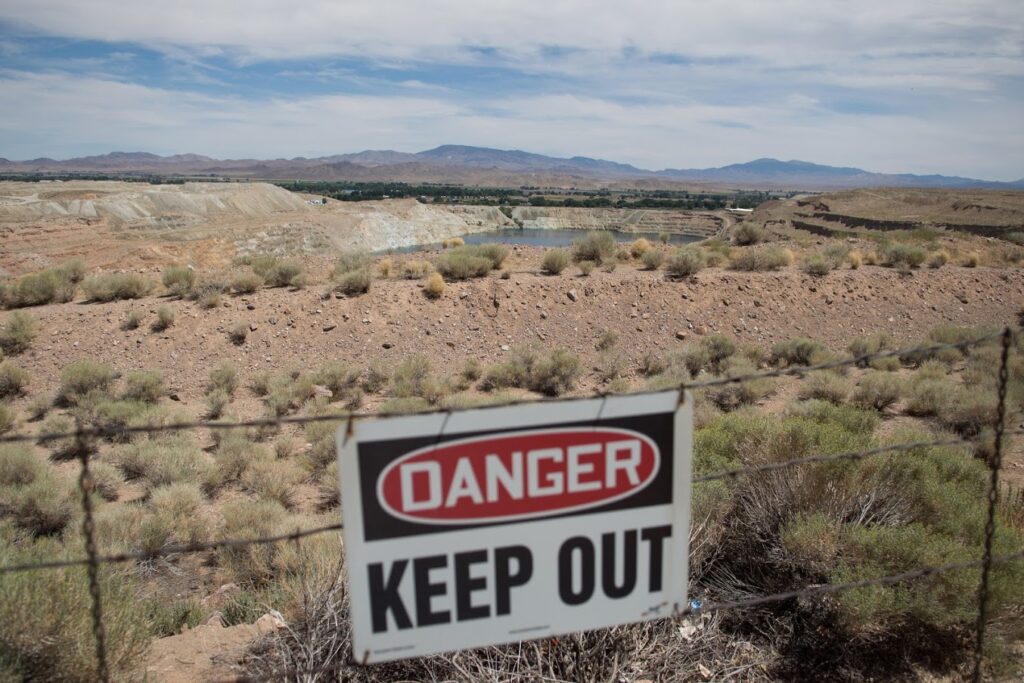
‘Closely monitor the cleanup’
For decades, cleanup at the site was stalled by mistrust and oversight concerns.
State officials were slow to respond to the groundwater contamination in the early 2000s, and got involved in a dispute with a federal land manager who later won a whistleblower settlement.
At the time, Sen. Harry Reid, then the Senate majority whip, criticized NDEP and said the EPA should take control. Reid described the dynamic as “big business overwhelming a little state, and the state doesn’t have the power to fight them,” the Associated Press reported in 2004.
It was not until 2016, under former Gov. Brian Sandoval, that the state reluctantly agreed to a federal Superfund listing. Then in February 2018, Sandoval’s administration reversed course.
ARCO said it would be willing to take on liability for an abandoned portion of the mine if the EPA stepped aside. It meant ARCO would have to pay $30 to $40 million for the first cleanup phase.
It also meant the EPA would defer oversight of the cleanup to NDEP.
Critics of the “deferral” worried that NDEP would let ARCO off the hook and sideline comments from two tribes and citizen groups. They pointed out that EPA is a much larger agency with expertise around the country. And the deal, on its face, raised questions about ARCO’s motives: What financial sense did it make for a profit-driven company to add millions more to its costs?
An ARCO spokesperson told The Nevada Independent last year that it preferred NDEP manage the site because it was closer, had experience with Nevada mines and was “able to develop a more fit for purpose and efficient remedy decision” to help the project to “proceed more quickly.”
Lovato was aware of ARCO’s motives to cut costs and speed up the process.
“I am not going to deny that they’re looking to save money,” he said in an interview last year. “They’re going to be testing us, and we’re going to be pushing them at every corner of this.”
The tainted groundwater is one of the most important and potentially most costly aspects of the cleanup. The EPA, pushing for a Superfund listing in 2015, wrote that “the groundwater beneath the site and extending to the north and west of the Site already contains levels of arsenic, uranium, and other heavy metals above state and federal drinking water standards.”
In a document, the EPA noted that while modeling is not a “exact science,” “consultants to [ARCO] produced documentation showing that mine impacted groundwater has traveled more than halfway from the Site property toward the Yerington Paiute Tribe Reservation.”
The EPA stressed the importance of “a comprehensive remedy” to “alleviate the impacts to the Yerington Paiute Tribe, particularly as increased contaminant concentrations may challenge the Yerington Paiute Tribe treatment system,” on local residents and on agriculture in the future.
When the EPA deferred oversight to the state, several provisions focused on groundwater.
As part of the deferral agreement in February 2018, Lovato signed an order that outlined the cleanup process. A “Statement of Work,” included with that order, that the groundwater report — and model — must be “submitted or completed” 90 days after the agreement went into effect.
The completed report arrived two years later — showing far less mine pollution.
NDEP did not respond to questions about whether the Statement of Work was modified.
Democratic Gov. Steve Sisolak has continued to support the agreement.
Last September, Sisolak said that he believed “deferral is the most effective pathway to quickly clean up the mine site to the highest standards under all state and federal requirements.”
But Sisolak also wanted accountability. He said his administration would “continue to closely monitor the cleanup efforts to ensure that the NDEP continues holding the Atlantic Richfield Company accountable to the high standards and costs necessary for cleaning up the site.”

State officials have said that the scope of the cleanup would be the same as it would be under the EPA. Brad Crowell, whose Department of Conservation and Natural Resources oversees NDEP, said in an interview last September that the cleanup would match EPA’s requirements.
“One important distinction is that even if this were being done under the Superfund program, the scope wouldn't be any different than what NDEP is currently doing for scope,” Crowell said.
Addressing the company’s revised groundwater model, Crowell said NDEP’s role was to provide “independent expertise” in determining the scope of the contamination. He noted the dynamic — that the company probably had a more limited view, while residents had a more expansive one.
“NDEP is helping provide some independent expertise from their jurisdiction on what exactly are the mine-impacted waters...where are they, and how are they moving or not moving,” he said.
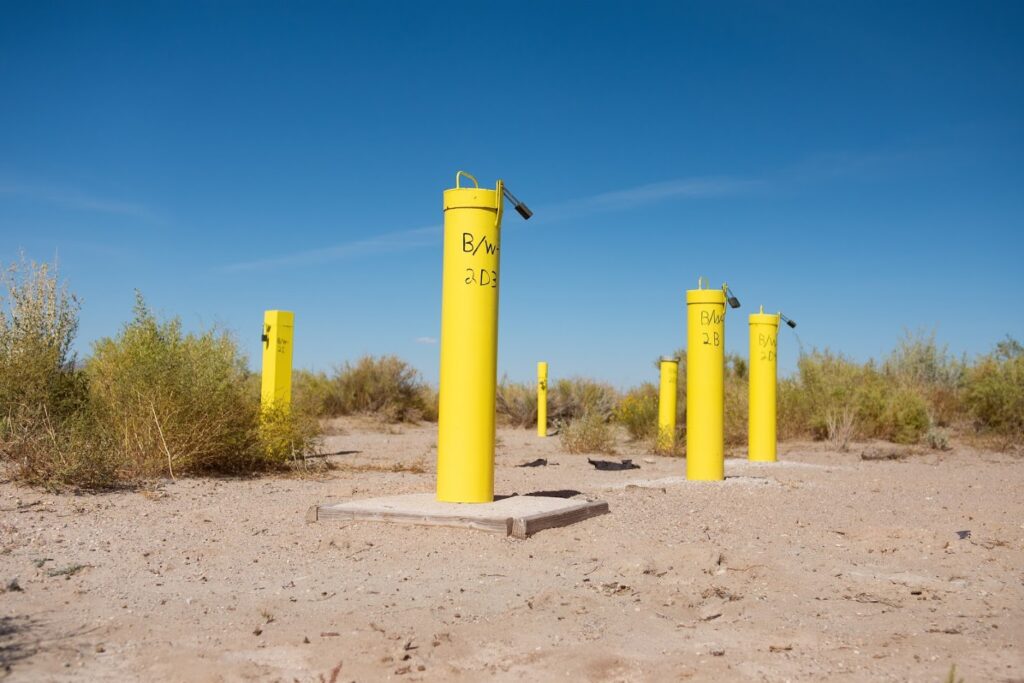
‘Process manipulation’
But the EPA had already studied that same question for more than a decade.
All groundwater models contain a zone of uncertainty. It is difficult to map what is invisible. In the area around the mine, the complex geologic conditions make modeling especially challenging.
Tracing the main contaminants, uranium and sulfate, to a specific source is even harder.
As early as 2012, the EPA recognized this. Acknowledging that naturally-occurring minerals and agricultural practices likely contributed to the contamination, the EPA allowed ARCO to depart from a conventional method for assessing contamination and rely on multiple lines of evidence.
The EPA also directed the company to err on the side of caution.
In 2016, the EPA ordered the company to take a conservative approach in its determination of how much and how far mine-related contamination had traveled through water beneath the site. In this context, a conservative approach is one encompassing more potential pollution, not less.
When the model was published in an October 2017 draft report, it had already been negotiated in three revisions. In certain areas, the EPA had even reduced the extent of the plume boundary.
Although ARCO said “refinements” could be warranted to more accurately assess the other sources of contamination, the company appeared ready to proceed with the EPA-accepted model.
An executive summary of ARCO’s draft report described the information within the document as being “sufficient to characterize the groundwater system, define the nature of mine-related groundwater contamination, perform a risk assessment, and conduct a feasibility study.”
That sentiment was echoed in the deferral agreement NDEP signed with ARCO in February 2018, when it assumed the lead responsibilities of the cleanup from the federal government.
The Statement of Work, included in the signed agreement, said that “the extensive amount of existing groundwater information is considered adequate to complete the [groundwater report].” The agreement said the report would “essentially consist of the content already developed.”
But with the signatures barely dry, NDEP and ARCO seemingly reversed course.
For the next two years, NDEP allowed the company to develop more favorable modeling. NDEP confirmed it approved the drafting of a technical memo not mentioned in the Statement of Work.
The Yerington Paiute Tribe, in comments on one document, said NDEP “failed to notify” anyone of what the tribe referred to as a “process manipulation” that lacked a robust oversight process.
“The entire effort appears to be outside the more practical processes found to be effective for this type of analysis and lacking in both peer review and planning,” the comment said.
There were other process concerns, too.
The tribe said NDEP failed to hold regular technical meetings, as the EPA had done. Those meetings allow parties involved in a project to discuss what should be included in the modeling.
NDEP provided The Nevada Independent with comments from the Yerington Paiute Tribe and the Bureau of Land Management, which are public records. The tribe declined an interview.
The Walker River Paiute Tribe, which is involved in the cleanup and shares a watershed with the Yerington Paiute Tribe, voiced worries about the process in an interview earlier this month.
"They are not respecting our decisions as a sovereign nation and the expertise we want at the table," Chairman Amber Torres said. “To me, it hasn’t been a smooth, working relationship.”
A separate letter from NDEP suggests that the state agency exercised tight control over the flow of information in the formal comment process for the revised groundwater modeling.
The letter, which was sent to the tribe in July 2019, said it offered guidelines “to provide some criteria and set some expectations for future comments from the tribe.” NDEP, the letter said, would filter all comments and only send ARCO the comments it determined to be relevant.
The “comment process is not left to a vote,” the guidelines said.
NDEP said it would not accept comments “written as a perspective” or not relevant to a specific document. According to the letter, similar notices were sent to other parties involved at the site.
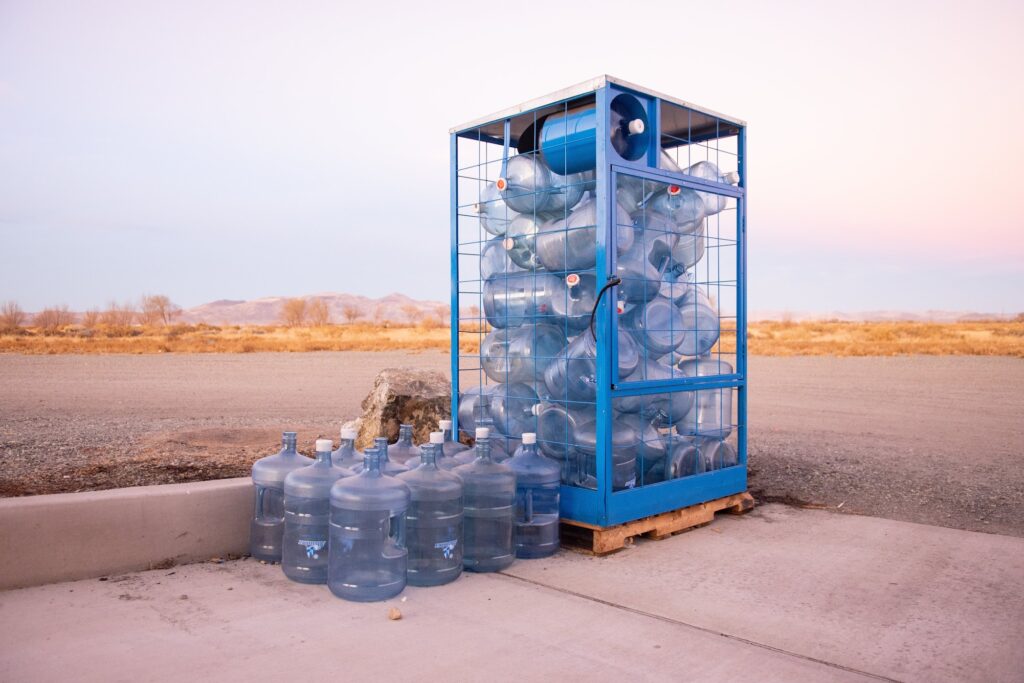
‘Significant revisions’
When NDEP approved the final report in May, it looked very different from the original draft.
These were not minor refinements. There were new authors on the report. ARCO had hired a new consulting firm, Copper Environmental Consulting. The final version of the report included a footnote on the credit page, noting that “significant revisions” had been made from the draft.
An ARCO spokesperson said it “periodically opens up portfolios of work to competitive bidding.”
ARCO, with the state’s eventual approval, introduced new information, including an unexpected geothermal report, that led to a model more favorable than the prior EPA-accepted analysis.
NDEP insists that the changes were consistent with the plan and the deferral agreement.
In an emailed response to questions, NDEP said the draft report containing the original model “wasn't considered sufficient,” even though ARCO’s draft report acknowledged it as “sufficient.”

The EPA had provided “substantial comments” on the draft, NDEP argues, and it was awaiting a plume stability memo from the company. The agency further contends that the EPA-accepted model did not fully capture where mine contamination ended and other contamination started.
A spokesperson for the EPA said the agency did not request further groundwater study at the time of the deferral agreement.
When asked if NDEP was following the conservative standard the EPA used while overseeing the mine cleanup, the agency said that state regulators “relied on the best available science.”
NDEP, in the emailed statement, said that “the data dictates how conservative the conclusions can be with respect to the extent of mine-impacted groundwater that is commingled with other sources of contaminants from agricultural practices and natural geochemistry.”
Lovato also defended the new model during a phone interview in May.
He said the changes should be viewed as a “scientific progression and refinements based on additional information” and “consistent with the previously approved EPA delineation as a zone.”
Lovato said the EPA model was conservative and represented a maximum “outside estimate” of the pollution. In the phone interview, Jeff Collins, chief of NDEP’s Bureau of Corrective Actions, said “the door was left open by EPA to evaluate other potential contributors to groundwater.”
To support their case that “the door was left open by EPA,” Collins and Lovato repeatedly cited language in the 2017 draft report. The language said “further refinements” could be necessary “to fully account for naturally occurring chemical concentrations in study area groundwater.”
But last year, during an interview, NDEP did not disclose that ARCO had proposed changes to the conservative plume boundary that had been revised three times and accepted by the EPA.
In fact, both Lovato and Collins noted EPA’s approval of the previously-accepted model.
“This whole plume boundary was approved by EPA and their experts along with NDEP back in, like I said, in 2017,” he said, sitting alongside Lovato in August 2019. “So it’s been understood for a couple of years now. We’re just putting the final touches on the investigation report.”
Public letters and documents produced by NDEP show that the regulatory agency, at the time, was fully aware of the significant scope of the revisions they were starting to approve.
Written statements NDEP made months prior to that interview suggest the revisions were far more sweeping than “refinements” or the “final touches” of an ongoing groundwater study.
In May 2019, NDEP sent ARCO a compilation of comments from the groups involved with the cleanup. In that document, NDEP described the new model as containing “significant changes.”
In an April 2019 letter from NDEP to ARCO, NDEP referred to “significant changes” in the modeling, saying “it is essential for readers to have an opportunity to evaluate the changes.”
Others took notice.
Commenting on a revision of that report in November 2019, the Yerington Paiute Tribe noted the “dramatic change in hydrologic conceptual model proposed” following the change in oversight.
The regulator and the company, the tribe said, “have failed to meet the request by the Tribe for technical meetings needed to manage the dramatic change in hydrologic conceptual model proposed since the introduction” of two company-commissioned reports after the deferral.

New regulator, new science, new result
As the state took the reins of the cleanup, ARCO was preparing a case that naturally-occurring mineralization was far more prevalent in the area and responsible for much of the pollution.
In early 2018, ARCO consultants began hinting at this change in documents filed with the state.
The company submitted a draft of what is known as the Plume Stability Technical Memo in May 2018. The purpose of the document was to evaluate the movement of the plume — to be used for a future report. Still, the executive summary cast doubt on existing groundwater modeling.
It said the conservative plume boundary, as acknowledged by the EPA, “did not fully account for natural inputs or agricultural activities” and was best seen as a zone, not as a firm boundary.
In October 2018, ARCO filed another document. It was called the Geothermal Technical Memo.
The lengthy study came as a surprise to the tribe.
It was not included in the Statement of Work nor was it included on a list of documents intended to inform the final report. But the memo was not a surprise to NDEP, which approved its drafting.
In an email, NDEP stated that “it did not come as a surprise because, as stated previously to this reporter, [an earlier modeling report] as approved by EPA left the door open for more investigation of natural geochemistry that could be contributing to the groundwater impacts.”
The memo presented evidence of a geothermal system in the polluted area, and argued that it had “a marked influence on groundwater quality,” casting doubt on how much uranium pollution was related to the mine or was naturally occurring, spread around by agricultural practices.
The tribe, in its comments, called the new technical memo “suspect.”
The memo was used to create the new model.
The company said the volume of the total mine-related plume was now about 180,000 acre-feet, or less than half the size of the plume modeled in 2017. Moreover, it showed the contamination largely contained to the mine site, despite decades of concerns that pollution spread far off-site.
At this point, NDEP pushed back.
In a September 2019 letter to the company, regulators said the company’s final groundwater report “must present a more conservative interpretation of the [mine-related plume] extent.”
To do so, ARCO added a “low-confidence plume” to their new groundwater model showing a slightly larger zone of potential contamination. But when asked to provide the volume and mass of the revised plume, NDEP said in a written statement that it did not request that from ARCO.
NDEP, as part of a lengthy written explanation, said they could request it for future studies.
An ARCO spokesperson said the potential contamination extends a maximum 4,600 feet from the mine, or less than a mile. The earlier model showed the plume extending about two miles.
ARCO said the new data made it “possible to bring the picture into sharper focus by comparing the patterns of minerals and ratios of metals to other metals in the varying geologic features.”
The final report makes another point clear: ARCO disagreed with the EPA’s approach.
ARCO said “additional evaluations” were meant “to address the acknowledged limitations and conservative assumptions that were identified by ARC, EPA, NDEP and other stakeholders…”
The report concludes that the EPA directed the company to use an “an approach that did not account for all anthropogenic or naturally-occurring background sources within the study area.”
NDEP offered a different approach — one more favorable to the company.

‘What the hell are we supposed to bathe in?’
For years, ARCO has paid for Hunter’s bottled water. Residents started receiving bottled water in the early 2000s. Now the company is phasing out deliveries for properties outside the plume. On the wall adjacent to Hunter’s kitchen, there’s a black stand for a five-gallon water bottle jug.
“I’m not a scientist,” he said. “I'm just a homeowner.”
And someone should have to clean up his water, he says. To Hunter, this is no different than any business that leaves pollution. They are responsible for it from the “cradle to grave.”
“It’s just like guys that own service stations,” Hunter said. “They have to pay for the cleanup. They close it down, 30 years later they still have to pay for the cleanup.”
Hunter is worried about his neighbors too.
Other residents have wells in the area. Many of them have been linked to the city of Yerington’s municipal supply. ARCO paid for municipal connections for other nearby residents as part of a class-action settlement in 2013 worth up to $20 million. About 20 residences, including Hunter’s home, are on the list for bottled water deliveries but are too far to connect to a municipal line.
ARCO also pays for bottled water deliveries for about 90 residences on the Yerington Paiute Tribe’s reservation north of the mine site. The tribe also has a water treatment system and entered into a confidential settlement agreement with ARCO last year, court records show.
Lovato did not say whether agriculture would be held responsible for the contamination, despite ARCO’s model showing that agricultural practices bore a portion of responsibility. But he also said that, moving forward, the agency would look at the entirety of the contamination in the area.
“When we look at risk, we just don't look at the risk from mining water,” Lovato said. “We look at risk from mined water in the context of everything else going on. It's not like we subtract out what may be attributed to the background or maybe attributed to agricultural activity.”
State law does not offer much recourse to domestic well owners whose groundwater has been contaminated. NDEP regulates public water systems but it does not regulate domestic wells.
In March, Hunter received a letter from regulators saying he had the option of receiving a free point-of-use reverse osmosis system to filter the drinking water that comes out of his faucet.
State regulators say that the risk for uranium exposure is a lot higher in drinking water than it is for other pathways. But that doesn’t stop Hunter from worrying about using his domestic well.
“We’re not supposed to drink the water,” he says. “What the hell are we supposed to bathe in?”
